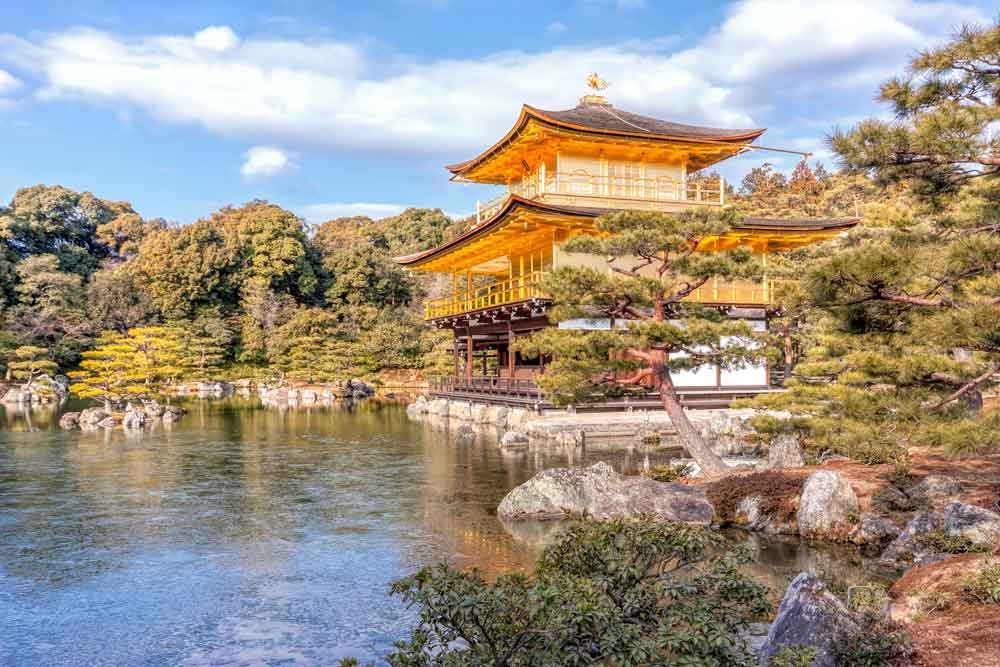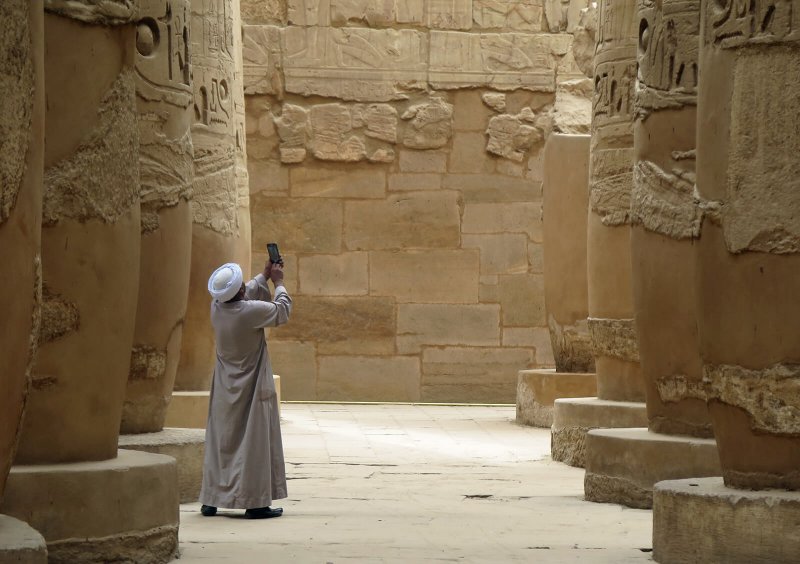Kyoto, the ancient capital of Japan, holds within its boundaries a rich tapestry of history, culture, and spirituality. Tucked away amidst its bustling streets and modern buildings are treasures of the past, where time seems to stand still. Temples, with their serene gardens, intricate architecture, and a palpable sense of tranquility, invite visitors to step back into a different era. In this article, we embark on a journey through some of Kyoto’s most enchanting temples, each a testament to the city’s deep-rooted traditions and the quest for inner peace.
Kinkaku-ji (Golden Pavilion)
One cannot speak of Kyoto’s temples without mentioning the iconic Kinkaku-ji, or the Golden Pavilion. This Zen Buddhist temple stands resplendent against the backdrop of a shimmering pond, its top two floors covered entirely in gold leaf. Originally built as a retirement villa for a shogun, the pavilion was later transformed into a temple. The reflection of the pavilion on the water’s surface creates a breathtaking sight, especially during the tranquil hours of dawn or dusk.
Fushimi Inari Taisha
Venturing into the verdant hills of southern Kyoto, one encounters the mesmerizing Fushimi Inari Taisha, renowned for its stunning pathway lined with thousands of vibrant torii gates. Dedicated to Inari, the Shinto god of rice and prosperity, this temple complex offers not only spiritual significance but also a picturesque hiking experience. The winding path takes visitors through the gates, leading to various sub-shrines and a panoramic view of Kyoto from the summit.
Kiyomizu-dera
Perched atop the eastern hills, Kiyomizu-dera offers not only panoramic views of the city but also a sense of architectural wonder. The main hall, with its massive wooden terrace, seems to defy gravity as it juts out from the mountainside. The temple takes its name, which means “Pure Water Temple,” from the Otawa Waterfall within its grounds. Visitors can partake in a traditional practice of drinking from three streams, each believed to confer a specific benefit – longevity, success in studies, and a fortunate love life.
Ryoan-ji (Temple of the Dragon at Peace)
For those seeking contemplation, Ryoan-ji presents a tranquil Zen garden that is often considered a masterpiece of minimalism. The rock garden, consisting of 15 carefully placed rocks set in raked white gravel, invites meditation and introspection. The temple’s atmosphere is one of serene simplicity, allowing visitors to disconnect from the external world and focus on the present moment.
Ginkaku-ji (Silver Pavilion)
In contrast to the flamboyance of the Golden Pavilion, the Ginkaku-ji, or Silver Pavilion, exudes a sense of rustic elegance. The temple is surrounded by meticulously manicured gardens that change with the seasons, showcasing the delicate beauty of cherry blossoms in spring and fiery foliage in autumn. The temple’s simple yet refined architecture resonates with the wabi-sabi philosophy, emphasizing the beauty in imperfection and transience.
Exploring the Unseen
While the aforementioned temples are some of Kyoto’s most famous, the city boasts an abundance of lesser-known gems that offer equally captivating experiences. The Nanzen-ji complex, nestled against the Higashiyama mountains, offers serene gardens, a stunning aqueduct, and a quiet atmosphere perfect for introspection. The Tenryu-ji temple, located in the Arashiyama district, presents a beautiful stroll garden with a pond and walking paths that envelop visitors in nature’s embrace.
Final Thoughts
Kyoto’s temples serve as more than just historical relics; they are living testaments to the city’s enduring cultural heritage. Each temple invites visitors to step away from the frenetic pace of modern life and immerse themselves in the tranquility of a bygone era. Whether you’re wandering through the torii gates of Fushimi Inari or meditating in the rock garden of Ryoan-ji, the temples of Kyoto offer a journey of self-discovery and a connection to the spiritual heart of Japan. So, if you find yourself in Kyoto, don’t miss the chance to get lost in its temples and find a piece of tranquility amidst the chaos of the world.




